Posts Categorized: Economy
-
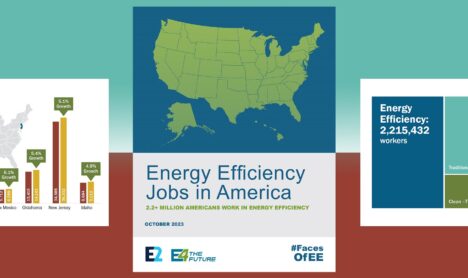
The U.S. Energy Efficiency Workforce: Deep-Dive Annual Insights
by Pat Stanton
I’m proud of my team’s work on our seventh annual energy efficiency (EE) jobs report. Energy Efficiency Jobs in America in 2023 shows 2.2+ million efficiency workers, a number expected to grow annually with new workforce development and training happening across the country. This report focuses on the specially trained builders, electricians and other skilled professionals who focus on making our buildings, appliances, factories and infrastructure run on less energy.
Providing access to consistently-presented EE workforce statistics at regular intervals during this crucial time serves as a key baseline for comparison, as public and private sector infrastructure investments continue to rise.
-

Unparalleled Opportunities Arise for Energy Efficiency Job Growth: Report
by Pat Stanton
Energy efficiency (EE) initiatives are needing increased attention with new federal funds. This translates into more jobs on the way. Energy Efficiency Jobs in America shows there are nearly 2.2 million efficiency workers, and the number will rise as infrastructure investments kick in this year. Making these workforce statistics available now is important, so that we have a baseline for comparison.
-

With Building Efficiency Retrofits, You Really Can Have It All
by Carina Wallack and Pat Stanton
Care about economic and environmental well-being? If so, you realize that our most valuable assets are sectors that create jobs quickly while cost-effectively reducing emissions for the long haul. Building energy efficiency investments accomplish this and more.
Read More -
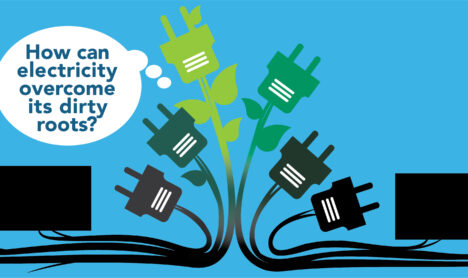
Efficiency: Minimizing Total Costs of a Precious Resource
by Pat Stanton
Fighting climate change hinges on transitioning consumption to what will become our most precious energy resource: zero-carbon electricity.
Read More -

Energy Independence in a New Light: Economy Grows, Yet Uses Less Energy
by Pat Stanton
Throughout the 19th and 20th centuries, conventional wisdom equated economic growth with a rise in energy use, across the board. An examination of trends over the past three decades, proves that the correlation is no longer valid.
A Synapse Energy Economics analysis of data from the Energy Information Agency (EIA) recently commissioned by E4TheFuture compares per capita economic growth, energy use and CO2 emissions nationally, and for each state and the District of Columbia.
Read More -
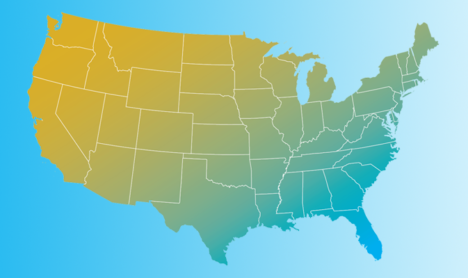
Rebuilding the Energy Efficiency Workforce
by Steve Cowell
“A year like no other.” Say it anywhere, and you see nods of agreement. In moments of solidarity you can muster a rueful half-smile. We all know that the impacts of 2020 on people’s lives are profound. What about energy efficiency professionals specifically? This community of workers is very much on my mind.
Read More -

Carsharing: The New Challenges and Opportunities Presented by COVID-19
by Rachel Ehrman
The COVID-19 pandemic has shaken the world. It’s affected everyone, every business, every industry. While this time is one that is surely testing us all (hundreds of thousands of clean energy jobs vanished in a few short weeks), it is also a time to pause, reflect, and reshape our work to come out of this difficult time more resilient than before. This is especially true of industries that rely on shared use when many people seek every precaution possible to avoid the virus. Despite its environmental and financial benefits, carsharing is struggling. Read More
-
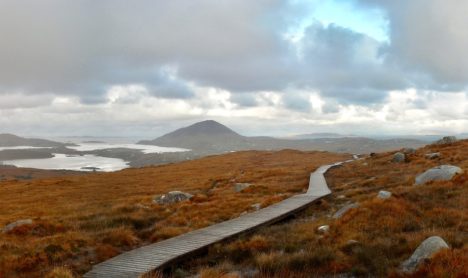
Faces of EE to COVID: “You might break our stride, but you can’t break our spirit.”
by Pat Stanton
“We will put our best foot forward.”
When I listen to energy efficiency professionals, among their many struggles today I hear determination and grit. People are figuring out what to do next, how to retool and help each other. Online training is a big part of what can happen right now. And new ways of minimal- or no-contact building retrofits are taking shape.
A multitude of voices are asserting we must “build back better” — focus resources and efforts on a clean economy, a healthy and equitable future. Despite the gut-punch reality of job losses revealed last week, EE pros are stepping up to find a possible path forward. Read More
-

Three Reasons the Secret’s Out about EE Jobs
by Steve Cowell
Only a few of us knew the secret at first. You’ve heard it by now though, as more and more people catch the knowledge: Energy efficiency is a solution that grows jobs and builds careers as it contributes to local economies. By local, I refer to essentially every county across the United States. Energy efficiency now supports an American workforce of more than 2.3 million people, and continues rising.
I am excited to share great news with you: Our 2019 Energy Efficiency Jobs in America is now available. It offers granular details you will find useful and valuable if you care about helping to advance clean energy, as I do. Read More
-
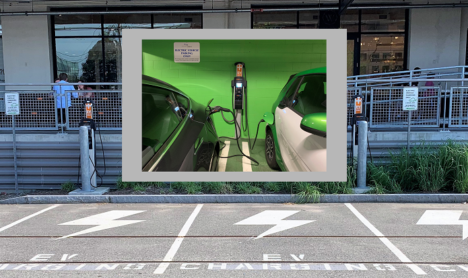
EVs Can Lead the Charge for Responsible Batteries
by Rachel Ehrman
When I walk in my neighborhood, I’m starting to notice electric vehicles (EVs) parked on the street and driving through town. When I turn on the television, car companies are starting to run ads for their EV models. It’s clear EVs are on the rise, and there’s no sign that their growth is slowing down anytime soon. Read More
-
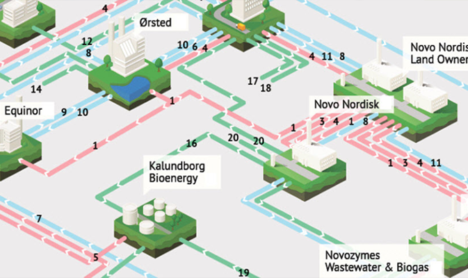
Industrial Symbiosis: Taking Resource Efficiency to the Next Level
by Susan Buchan
You may remember the term symbiosis from eighth grade biology. It’s the concept of organisms sharing materials, energy, even their bodies – with other organisms for the benefit of both species. The idea of applying symbiosis to industrial producers was pioneered in Denmark almost 50 years ago in 1972, and came to fruition in 2015 with the establishment of the Kalundborg Symbiosis Industrial Park.
-
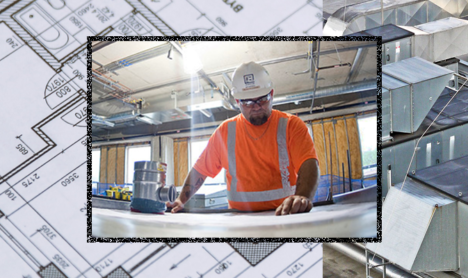
Construction Jobs Significant in U.S. Energy Efficiency Employment
by Pat Stanton
Since early September, I have been eager to share findings from our recently released Energy Efficiency Jobs in America report. One key fact that surfaced is the importance of construction work in the energy efficiency (EE) industry. Overall, 2.25 million Americans are employed in EE. Of these workers, 1.27 million are employed in construction.*
Did you know that 1 in 6 of all United States construction workers spend 50% or more of their time on EE-related tasks? People may think that careers in efficiency are limited to changing light bulbs and installing insulation. But we’ve discovered that most EE construction work is related to installing high efficiency heating and cooling / HVAC systems. Read More
-
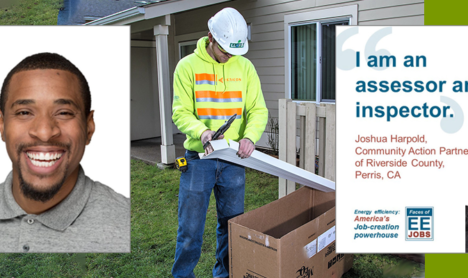
United We Work: Together, a Force for Good
by Steve Cowell
The business case for energy efficiency is well-proven. Compelling evidence shows that EE prevents energy waste and lowers costs — in homes, and in commercial, industrial and institutional buildings. EE serves as a “baseload plant,” by reducing overall energy use. It’s reliable and resilient. And energy efficiency is an economic turbocharger. A key aspect of economic benefit is the massive jobs boost from the EE sector. My team is spearheading Faces of EE to introduce energy efficiency’s 2.2 million U.S. workers.
Read More -

Clean Energy in Today’s Political Climate: Businesses Double Down
by Rachel Ehrman
The mood in the room was one of fierce determination.
“It’s not a matter of politics…it’s about economics and humanity,” Mindy Lubber’s opening remarks drew a standing ovation from 600+ Ceres Conference attendees – from Fortune 500 companies and investors to U.S. non-profit organizations. As I rose from my seat in the room, I knew it was clear that I was among
Read More
Recent Articles
- Empowering Change: Advocating for Diversity in the Energy Efficiency Industry
- Workforce Advancements in Energy Efficiency: Heat and Frost Union Apprenticeships
- The U.S. Energy Efficiency Workforce: Deep-Dive Annual Insights
- #EEDay2023: Energy Efficiency Everywhere All at Once
- Unparalleled Opportunities Arise for Energy Efficiency Job Growth: Report